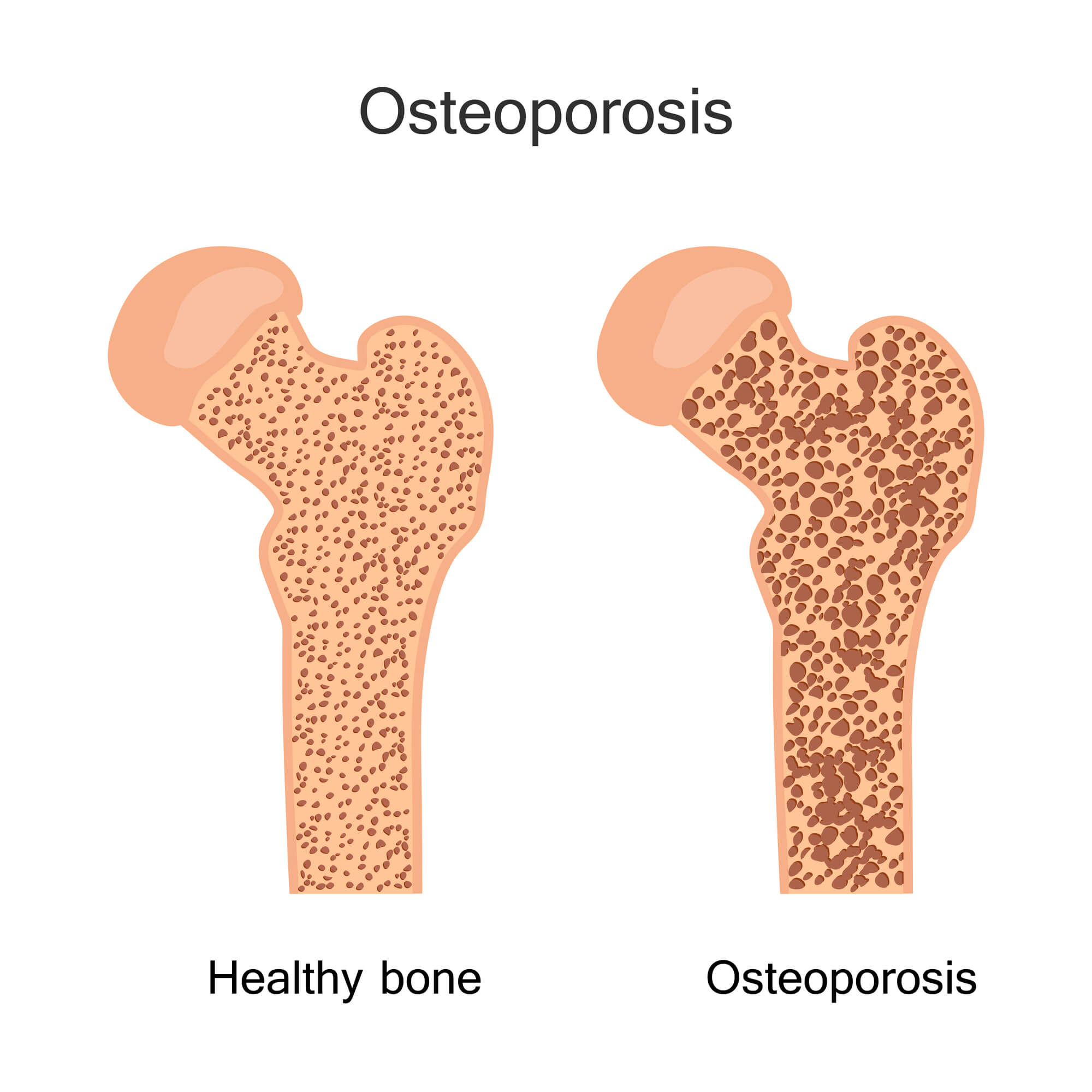Genetic damage can cause osteoporosis and muscle and bone depletion at the same time

Osteoporosis is a disease that causes bone weakening and can lead to fractures, movement restrictions, pain and impairment of function (the rate of bone breakdown exceeds the rate of construction, therefore there is a gradual and continuous decrease in the amount of bone and its density). Sarcopenia is a disease in which there is a decrease in muscle strength and mass. Thus, it affects, among other things, movement function, walking and balance and increases the risk of falls and fractures. In five percent of the population (and possibly even more) both diseases develop at the same time - then in fact it is a combined disease called osteosarcopenia. The main risk factors for osteosarcopenia - which are similar to the risk factors for each individual disease - are: heredity, old age (50 and over), female gender, low BMI (body mass index), obesity, physical inactivity, and lack of vitamins (mainly D).
Osteoporosis is a recognized and well-known disease, sarcopenia less so, and only a few have heard of osteosarcopenia. Prof. David Karsik from the Faculty of Medicine at Bar Ilan University researches the genetics of musculoskeletal diseases, including osteosarcopenia. "From a biological point of view, osteoporosis and sarcopenia may develop at the same time," he says. "The bones and muscles are connected both in structure and in their internal environment and work together. The muscle wraps around the bone and there is a molecular bond between them. That's why an injury to a bone can damage a muscle and vice versa."
Osteoporosis can be treated with a variety of drugs. Sarcopenia is a disease that was discovered only ten years ago and a cure for it has not yet been developed. The goal of Prof. Kersik and his team is to develop a drug that will suit both, that is, for osteosarcopenia. In their latest study, the researchers sought to examine the genetics of the combined disease. They received genetic data from a genomic scan (of DNA) performed on blood samples of tens of thousands of osteosarcopenia patients (the experimental group) and healthy people (the control group) aged 60 and over, and conducted a bioinformatic (computational) analysis. This is how they discovered regions in the genome that are characteristic of osteosarcopenia only. In each such area they discovered several genes, and some of them - including those related to muscle and bone building and resistance to pressure and injuries - were suspected to be damaged. Prof. Karsik says: "It is possible that a mutation in certain genes that were discovered damages, for example, the production of a protein that is essential for building muscle or bone. A person can live with this mutation quietly for 60-50 years, and then, with the aging processes (for example, inflammation in the blood), the damage to the protein will begin to be more significant and cause muscle and bone depletion."

Prof. Karsik's research group
Prof. Karsik also points out that the genetic vulnerabilities in osteosarcopenia patients are hereditary (samples of patients from the same family were also tested), and it is possible that they can be detected in relatives and prevented in advance: "It is possible to detect the risk groups at a relatively young age (for example, 40) and give them treatment Preventive - such as regular physical therapy and supplements. And if this does not help - we hope that it will be possible to give patients drugs that will prevent damage to the genome and the function of the proteins that are essential for building bone and muscle. For example, injections of normal (recombinant) proteins to replace the damaged ones. That's what we're working on." What's the question? What are the typical genetics of osteosarcopenia - the disease that combines osteoporosis and sarcopenia?
Therefore, in the second part of the study - which was awarded a research grant from the National Science Foundation - the researchers injected zebrafish eggs with substances that would damage the protein that contributes to bone and muscle resistance (similar to the one found to be damaged in the patients). When the fish hatched, their muscles or bones were depleted and distorted. The researchers gave them muscle and bone-building treatment, which included anti-inflammatory drugs, vitamin D, a fat-free diet, and a recombinant protein - which plays the role of the damaged protein. At this stage the fish are still growing and the researchers are waiting for the final results.

Prof. David Karsik
Life itself:
Prof. David Karsik, 53 years old, immigrated to Israel from the Soviet Union 30 years ago and currently lives in Safed. He really enjoys nature in the Galilee, rides a bike and goes skiing. His favorite book is "Russian novel" by Meir Shalov.
For the article on the Voice of Science website

One response
Just one point who is the idiot who came up with these names? Because of him, everyone who is interested in the field should really learn to memorize the names of the diseases